| Equation | (# children receiving services) x (% families reduce homelessness solely because of this program) x (Percentage point decrease in the probability of chronic illness) x (QALY increase) x ($ QALY) |
| Explanation | The metric estimates the impact of avoided or reduced homelessness for children on the likelihood of chronic illness, estimated in quality-adjusted life years (QALY). Number of children in families receiving housing: Reported by program Percent of these adults who avoid homelessness due the program: [0.52], for programs serving individuals at imminent risk of homelessness (e.g. individuals coming from shelters, or with eviction notices and no feasible housing alternative), we assume a 100% rate of effectiveness. To this number, we subtract the percentage of homeless individuals in the Twin Cities metropolitan area who are on a waiting list for any public housing, Section 8 housing, or some other type of housing that offers financial assistance as a counterfactual [48%] (Wilder Research, 2016). Percentage point decrease in the probability of chronic illness: [0.064], we estimate a 6 percentage point difference in the probability of chronic illness for homeless individuals compared to an individual who are not homeless, based on findings from the National Center for Family Homelessness (1999) and the Family Housing Fund (1999) that, controlling for important covariates, approximately 16 percent of poor children in poverty who are homeless suffer chronic illness, whereas only 9 percent of poor children who are not homeless suffer chronic illness. QALY increase: [0.1], we estimate a 0.10 QALY value for the avoidance of chronic illness based on the average difference in QALY between those with totally controlled versus not well-controlled asthma (Briggs, Wallace, Clark & Bateman, 2006). Asthma is the most prevalent chronic illness afflicting poor children, so it provides an appropriate yet conservative guess for the cost of chronic illness—conservative because homeless children are twice as likely to suffer from at least one chronic illness. $ value per QALY: [$50,000]. Benefits are then discounted to present value based on the average age of participation to life expectancy. |
| References | Briggs, A., Wallace, M., Clark, T. & Bateman, E. (2006). Cost-effectiveness of asthma control: An economic appraisal of the GOAL study. Allergy, 61, 531-536. National Center for Family Homelessness. (1999). Homeless Children: America’s new outcasts. Newton Centre, MA: Author. Wilder Research. (2016). 2015 homeless adults and children: Minnesota statewide survey data. Retrieved from http://mnhomeless.org/minnesota-homeless-study/detailed-data-interviews/2015/HennepinCountyMN_Adult2015_Tables51-67.pdf Wilder Research. (2017). Homelessness in Minnesota: Youth on their own. Findings from the 2015 Minnesota Homeless Study. Retrieved from: http://mnhomeless.org/minnesota-homeless-study/reports-and-fact-sheets/2015/2015-homeless-youth-4-17.pdf |


